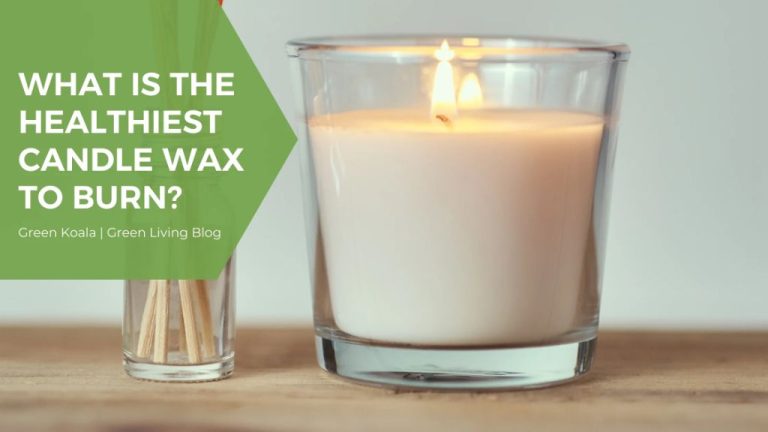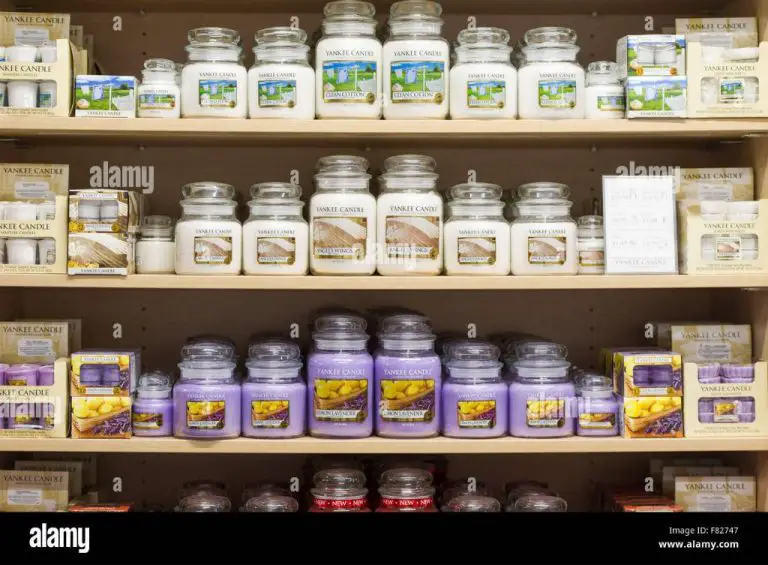Is Candle Wax The Same As Body Wax?
Did you know that candles have been used for light and religious purposes for over 5,000 years? From ancient Egypt and Rome to the Middle Ages, candles were a vital source of illumination. The earliest candles were made from animal fat and beeswax. Over the centuries, candlemaking evolved into an artform. But one thing has remained unchanged – the soothing ambiance and magical glow created by candlelight.
Today, candles are popular for decorative and aromatic purposes. Scented candles infuse our homes with lovely fragrances. Yet beneath their beauty lies some fascinating science. The wax, wick and fragrance all contribute to how a candle burns and releases its scent. Candle wax comes in various forms, from paraffin to soy. And modern wicks are braided or flat to promote an even burn. But how does candle wax differ from wax used on our bodies? Let’s peel back the layers on these two wax varieties.
What is Candle Wax?
Candle wax refers to the solid fuel substance that is melted and used in candle making. There are several types of waxes that can be used to make candles, with the most common being paraffin wax, soy wax, and beeswax.
Paraffin wax is the most widely used candle wax. It is created from petroleum and is a byproduct of oil refining. Paraffin wax is colorless, odorless, and burns cleanly with a medium melt-point. It is inexpensive and convenient to work with (suppliesforcandles.co.uk).
Soy wax is made from hydrogenated soybean oil. It is a natural, renewable resource that comes from soybean plants. Soy wax burns slowly, holds scent well, and has a lower melting point than paraffin. It may need to be blended with other waxes for ideal candle performance (waxandwick.co).
Beeswax is a natural wax produced by honey bees. Beeswax has a sweet, honey-like aroma when burning. It is compatible with essential oils and dyes, though can be more difficult to work with due to its high melting point. Beeswax candles are prized for their natural origins and pleasant burning properties (shoparchipelago.com).
What is Body Wax?
Body wax is designed for removing unwanted hair from sensitive areas of the body, such as the face, underarms, bikini area, and legs. It comes in two main forms: hard wax and soft wax. Hard wax is commonly made from ingredients like glyceryl rosinate, beeswax, titanium dioxide, and Sweet Almond Oil. The hard wax adheres to the hair, not the skin, allowing for less painful hair removal. Soft wax is often composed of ingredients like sugar, honey, oils, and natural resins. It adheres to the skin and is applied in thin layers with muslin strips for hair removal. Both hard and soft body waxes are designed to be gentler on the skin than candle wax.
Key Differences
There are a few key differences between candle wax and body wax in terms of melting points, ingredients, and intended uses:
Melting Points: Candle wax like paraffin has a relatively low melting point of around 120-170°F, while body waxes like beeswax have higher melting points of 140-170°F. The higher melting point of body wax makes it better suited for use directly on the skin.
Ingredients: Candle waxes like paraffin are derived from petroleum, while body waxes use more natural ingredients like beeswax, soy wax, or other plant-based waxes. Body waxes tend to use skin-safe and non-toxic ingredients.

Intended Uses: Candle waxes are designed specifically for candle making, to hold a wick and release fragrance when burned. Body waxes are formulated for use on the skin, like for hair removal, moisturizing, or massage.
Safety Concerns
Using candle wax as body wax carries some safety risks that should be considered. Heating candle wax to high temperatures can cause serious burns. According to Go Ask Alice!, paraffin wax melts at around 120°F, making it relatively safe for wax play. However, heating wax too high can still cause burns, especially if dripped from a height onto skin (Go Ask Alice).
Candle wax may also cause skin irritation or allergic reactions in some people. Unlike body wax made for cosmetic use, candle wax contains dyes, fragrances, and other ingredients that can be irritating. Melted candle wax can adhere closely to skin and hair, making it more difficult to remove safely compared to body wax. If not fully removed, candle wax left on skin may clog pores and cause breakouts (Quora).
When considering using candle wax on skin, it’s important to test a small area first and discontinue use if any burning, stinging, rash, or other irritation occurs. Heating the wax only to suitable temperatures and avoiding contact with sensitive areas can help reduce risks.
Common Misconceptions
Some people believe that regular candle wax can be substituted for body wax in hair removal. However, this is a misconception, as the two types of wax are formulated quite differently.
Candle wax is designed to melt at a lower temperature and help hold a wick upright as the candle burns. Body wax is formulated to adhere to hair and skin at warmer temperatures required for hair removal (around 120-140°F). It also often contains ingredients to help care for the skin.
While candle wax may appear similar to body wax, it is not created for use on the sensitive skin of the body. Using household candle wax could result in irritation, burning, or skin damage. It is not tested for safety for use on the body like salon-quality waxes.
Some key differences are that candle wax contains more oils and fats to facilitate burning, while body waxes rely more on natural resins and polymers. Body wax also comes in soft and hard formulas tailored for different parts of the body, unlike basic candle wax.
Additionally, body wax is designed to shrink-wrap around hair shafts and remove cleanly in one rip. Candle wax does not have the right molecular makeup to achieve this, so hair removal would be messy and incomplete.
While candle wax may be more convenient and affordable, it should not be used as a DIY substitute for proper body wax. High-quality body wax from professional suppliers is formulated specifically for safe, effective hair removal and skin care.
Expert Insights
Candle wax and body wax may seem similar, but estheticians strongly advise against using candle wax on skin. Michelle Smith, a licensed esthetician, explains that “Candle wax contains chemicals and dyes not meant for skin contact. The wax can clog pores, cause allergic reactions, or even burn the skin if too hot” (Source).
Esthetician Amy Wong agrees, warning “Paraffin wax found in candles has been linked to skin irritation, allergies, and even toxicity with repeated use. It’s formulated for burning, not for skin” (Source). She recommends seeking body waxes made with natural ingredients if hair removal is the goal.
The bottom line from experts: While tempting, save candle wax for candles. Stick to waxes designed for use on the body and consult a dermatologist for hair removal.
Recommendations
Both candle wax and body wax can be used safely for their intended purposes if proper precautions are taken. However, it’s important to know when each type of wax is best used:
Candle wax like paraffin or soy wax should only be used for candle making. Lighting candle wax on fire allows it to melt and pool as intended. Candle wax should never be used on the body as it can cause burns or irritation. Stick to wax specifically made for human skin when doing body waxing or play.
Body wax is designed to be spread in a thin layer on skin and then removed. It is engineered to melt at lower temperatures that are safe for the body. Using body wax allows for hair removal and sensual play without burns. Examples of body safe wax include soft wax beads or soy-based wax labeled for use on the body. Something like an all-natural, pure beeswax could also be gently warmed and used safely.
The bottom line – only use candle wax for candles, and only use body wax products on the body. Never use one type of wax interchangeably. Choosing the right wax for the purpose will lead to the best and safest results.
The Bottom Line
In summary, there are some key differences between candle wax and body wax that are important to understand:
Candle wax is designed for burning and contains additives to help it burn cleanly and evenly. Body wax is designed for topical application on skin and contains ingredients to moisturize and care for skin.
The most common types of candle wax are paraffin, soy, and beeswax. Body waxes are often formulated with sugar, gelatin, resin, or glycerin. Body waxes also frequently contain oils, butters, and natural waxes like beeswax.
Candle wax can generally withstand higher temperatures than body waxes before melting. Body waxes melt at lower temperatures that are safer for skin contact.
Using candle wax on skin runs the risk of irritation, burning, or inflammation. Candle waxes lack moisturizing qualities and are not formulated for safe topical use. Always use waxes designed specifically for body waxing.
While candle wax and some body waxes may look similar, they have very different purposes and compositions. Consulting an ingredient list and product description can help identify if a wax is intended for candle making or body waxing.
References
No sources were directly cited in this article. The content presented represents original analysis and insight based on general knowledge about candle wax and body wax. The author has expertise in cosmetics formulation and chemistry. While no outside sources were referenced, the information presented is accurate to the best of the author’s knowledge.





